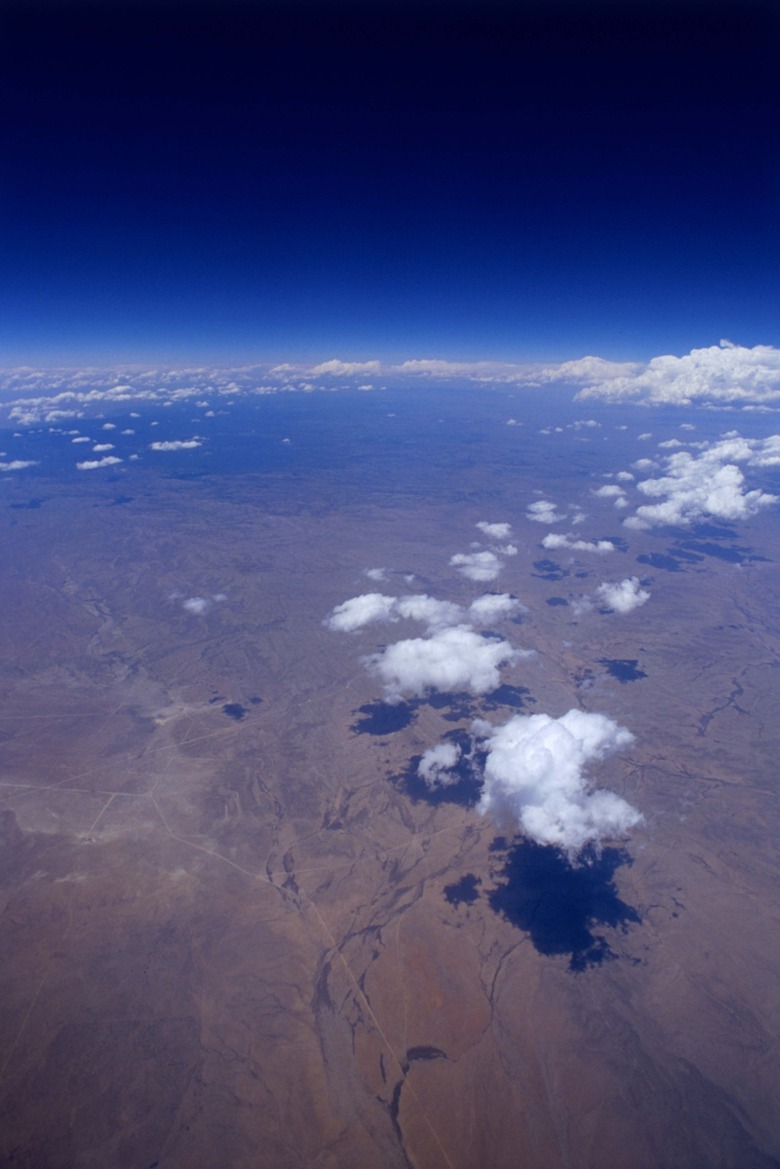Physical Address
Suite 5, 181 High Street,
Willoughby North NSW 2068
Physical Address
Suite 5, 181 High Street,
Willoughby North NSW 2068

Atmospheres surrounding planets contain mixtures of different gases. The Earth’s atmosphere makes life possible because it protects terrestrial life forms from the sun’s radiation, facilitates the water cycle and regulates temperature. Various layers of atmospheres have differing “thicknesses.” Thick and thin atmospheres are distinguished by the type of gases present, elevation and gravity. Earth has a relatively thin atmosphere, but its gravitational pull is enough to keep nitrogen and especially oxygen within its atmosphere to support life.
In general, the weaker the gravitational pull of a planet, the thinner the atmosphere will be. Just like how gravity pulls you towards the ground and keeps you from floating off into space, gravity also maintains a pull on our atmosphere. A planet with weak gravity will tend to have less mass and allow more atmosphere to escape into space.
Thus, the thickness or thinness of the atmosphere depends upon the strength or weakness of gravity on a specific planet. For example, the gravity on Jupiter is 318 times greater than on Earth, and thus Jupiter’s atmosphere is much thicker than Earth’s atmosphere. Gravity also gets weaker the further away it is from a planet, so the atmosphere will be thicker near the surface.
Temperature plays a key role in determining the thickness of an atmosphere. Areas with higher temperatures will often have a thinner atmosphere. The higher temperature warms the air molecules, which allows them to move more rapidly and reach an escape velocity into space.
On Earth, temperature decreases with elevation within the troposphere, the lowest level of the atmosphere, as the warmer molecules are escaping into the upper atmosphere. Temperatures, however, stabilize at higher atmospheric levels such as in the stratosphere.
A “thick” atmosphere represents a greater atmospheric density. Seventy-five percent of the mass of the Earth’s atmosphere is in the troposphere, and thus the troposphere is referred to as “thick” while higher layers are called “thin.” Atmospheres are designated as thick or thin depending upon planetary mass, gas density and the type of gases that are present, not simply the total depth of the atmosphere. The more dense the gases are, the more “thick” the atmosphere.
The type of gases present are as critical to density as elevation and gravity, and all are interrelated. Certain atmospheric gases will create thick atmospheres. For example, atmospheres with abundant hydrogen tend to be thicker as gases will combine with hydrogen for greater mass.
The composition of the gases within these atmospheres also impacts a planet’s ability to contain living organisms. This, along with temperature, is why habitable planets are so scarce. For example, some planets, such as Venus, have very thick atmospheres largely composed of carbon dioxide and cannot support life. The outer planets such as Jupiter, Saturn, Uranus and Neptune also have very thick atmospheres, but they consist of gases such as hydrogen, helium, methane and ammonia.
The Earth’s atmosphere is considered relatively thin, and it gets thinner further away from the planet’s surface. Thin atmospheres are characterized by their relative lack of hydrogen. Ninety-nine percent of the Earth’s atmosphere is composed of life-supporting oxygen and nitrogen, and 98 percent of these gases are in the lower 30 kilometers (19 miles) of the atmosphere due to gravity.
Other planets with similar atmospheric thickness could potentially sustain life in a similar fashion to Earth. For example, another celestial body – Europa, a moon of Jupiter – likewise has a thin atmosphere with abundant oxygen, and some believe that life is possible on this moon. Mars also has a thin atmosphere with little mass, 100 times thinner than Earth’s. However, Mars’ atmosphere mostly consists of carbon dioxide and is not conducive for life.